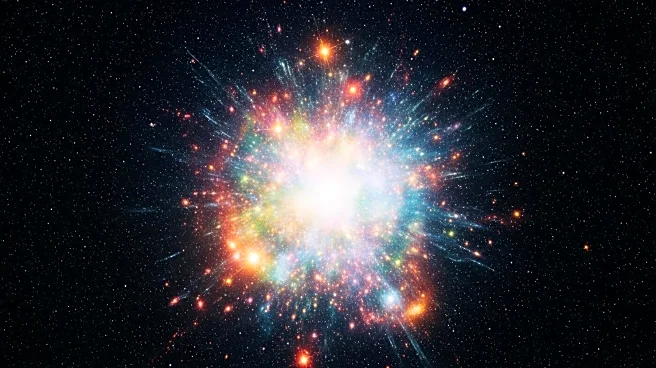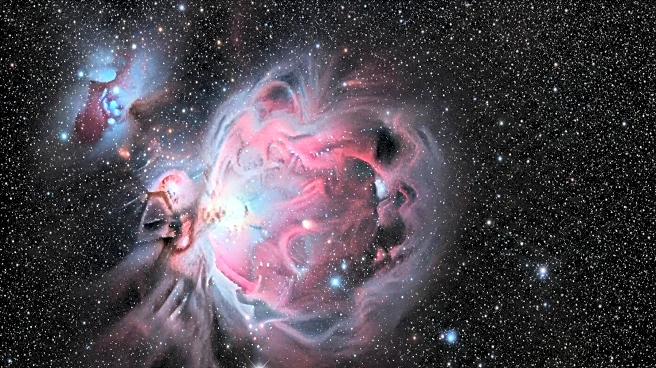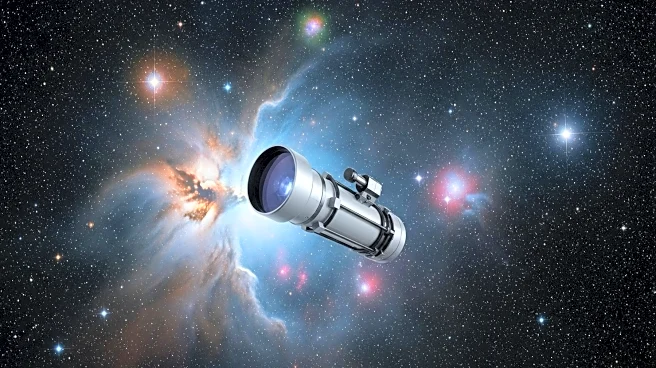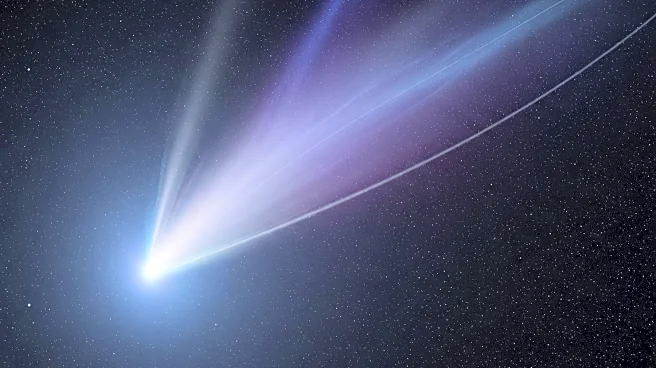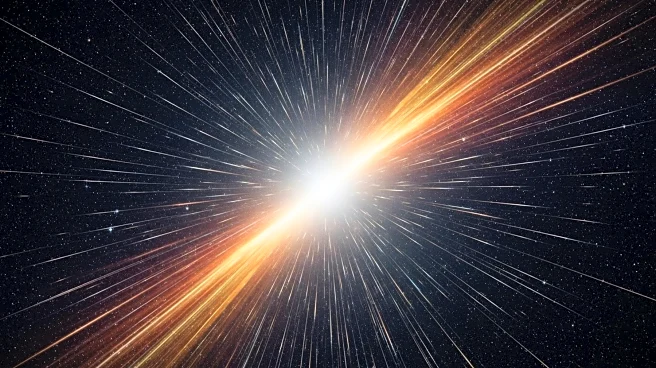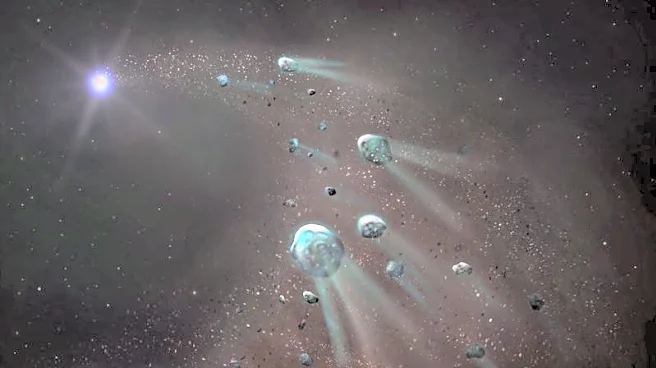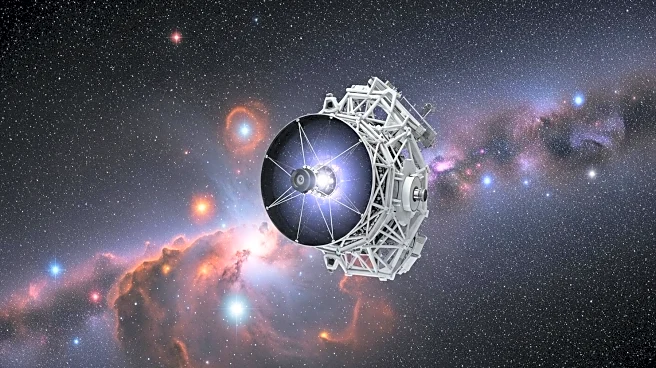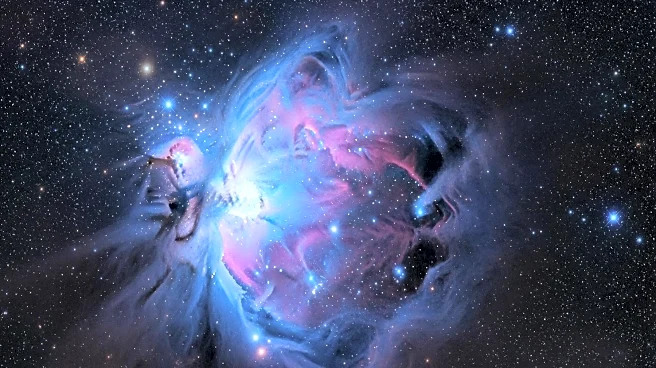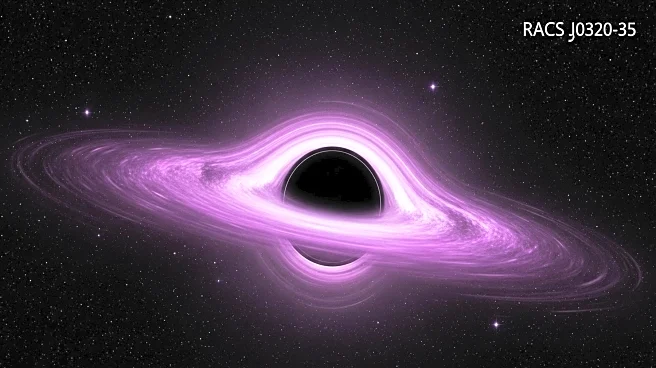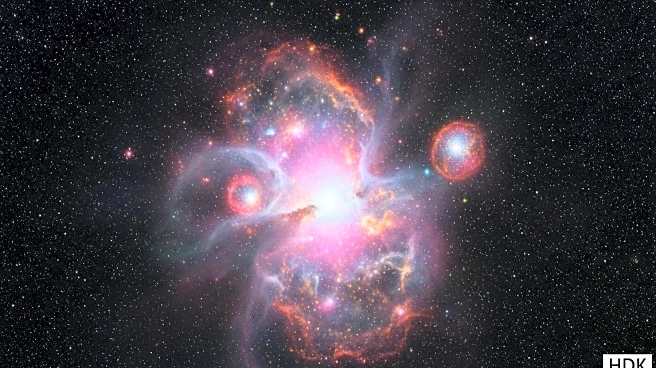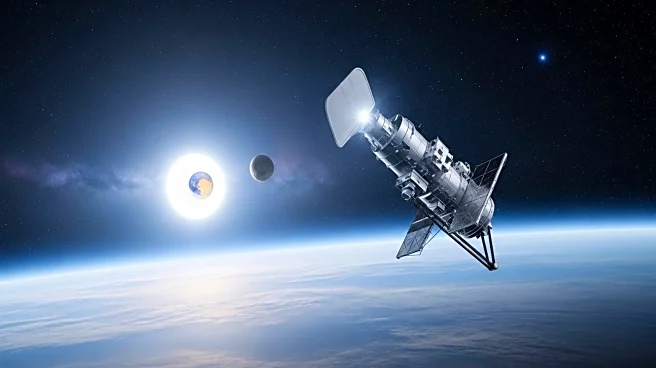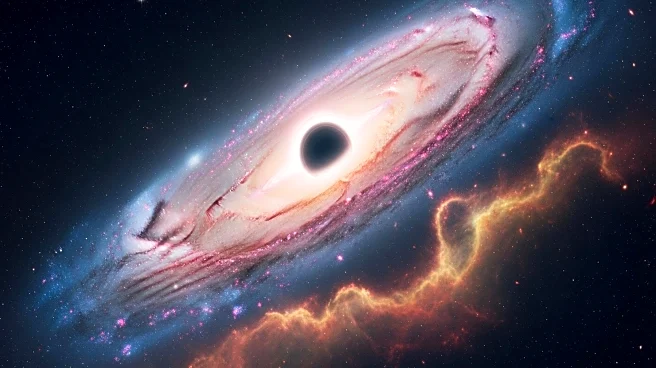What is the story about?
What's Happening?
Astronomers have observed a mysterious cosmic explosion, designated GRB 250702BDE, that defies current understanding of gamma-ray bursts. Detected by NASA's Fermi Gamma-ray Space Telescope and the Einstein Probe, the explosion lasted nearly a day, much longer than typical gamma-ray bursts. The event, occurring outside the Milky Way, was studied using the Very Large Telescope and the Hubble Space Telescope. Researchers are exploring possible explanations, including the death of a massive star or a tidal disruption event involving a black hole.
Why It's Important?
This unprecedented event challenges existing theories about gamma-ray bursts and cosmic explosions. Understanding the cause of such phenomena could provide insights into the life cycles of stars and the behavior of black holes. The discovery of an intermediate-mass black hole, if confirmed, would fill a gap in astronomical knowledge and enhance understanding of black hole formation and evolution. This research could lead to new models of cosmic events and improve predictions of similar occurrences.
What's Next?
Researchers will continue monitoring the aftermath of the explosion to determine its precise location and energy output. Further observations and analysis are needed to confirm the nature of the event and its implications for astrophysics. The study highlights the need for continued exploration and observation of the universe to uncover and understand rare cosmic phenomena.
AI Generated Content
Do you find this article useful?
